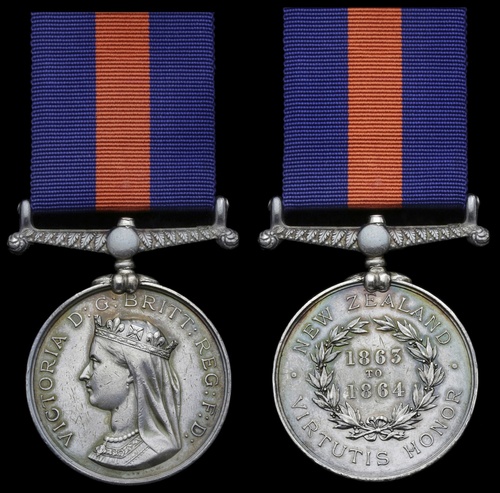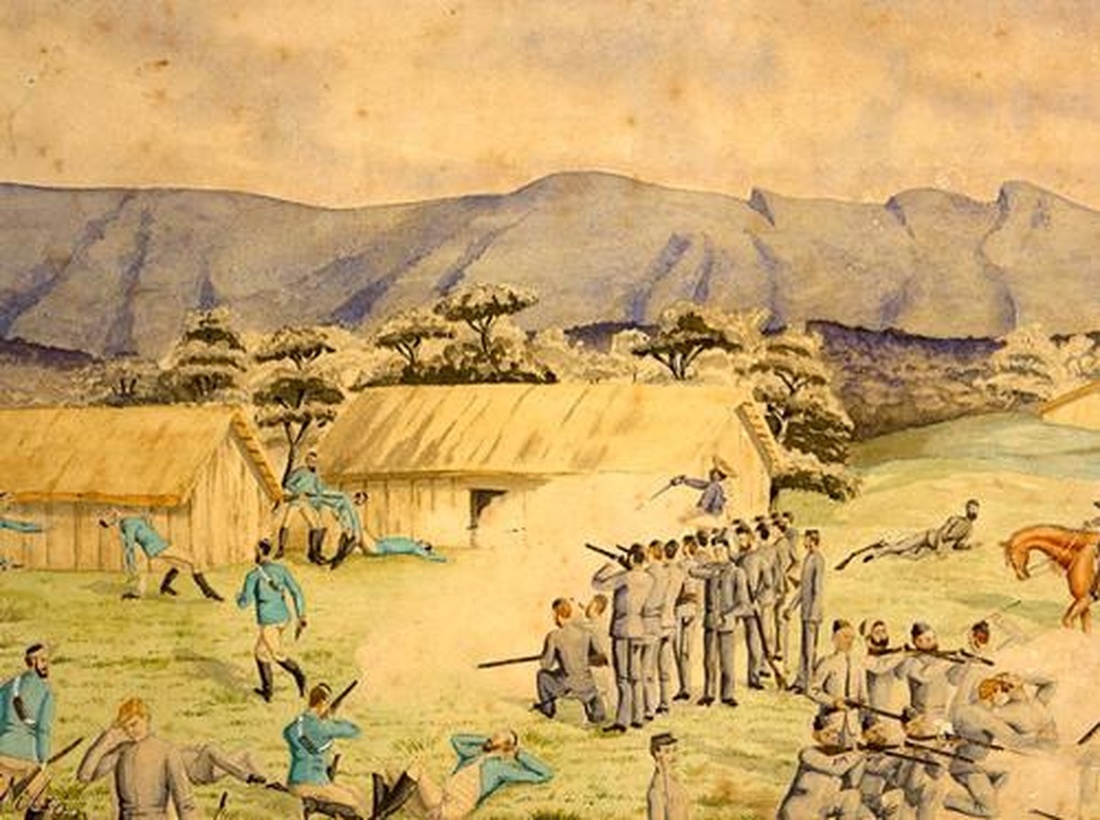Auction: 20002 - Orders, Decorations, Medals & Space Exploration
Lot: 76
New Zealand 1845-66, reverse dated 1863 to 1864 (3915 Sapr. Thos. Brownston. Ryl. Engrs.), impressed naming, very fine
One of 12 men of the Royal Engineers present at Rangiaowhia in February 1864.
Thomas Brownston was born circa 1835 at Morchard Bishop, Crediton, Devon, from a family who had a boot making business. Enlisting in the Royal Engineers in 24 September 1855, he joined the 23rd (Driver) Company, Sappers and Miners, which had just been converted to 'A' Troop upon its return from Constantinpole, for it never reached the theatre during the Crimean War. They landed at Calcutta in August 1857 and were part of the relief force at Lucknow (Medal & clasp) which made itself most useful in the city. A dreadful accident struck the unit on 17 March 1858 outside Kaiser Bagh when they were charged with disposing of some 3 tonnes of enemy gunpowder found on a cart. Whilst placing it down a local well, for an unknown reason it exploded, killing Captain A. J. Clerke, Lieutenant Brownlow and ten other men. Brownston appears to have been burned in the incident, for his Medical Record state a burn scar on his left arm. He also contracted hepatitis whilst in India which struck him down.
Returned home via Cape Town, Brownlow was fit again and transferred to 6th Company, Royal Engineers, landing in Auckland via Sydney on the Nugget under the command of Captain Bond. In 1862 the Sappers assisted in the building of the road from Drury to the Waikato River. Brownston however got himself in serious trouble for insubordination and striking an NCO on 15 June - originally sentenced to death - his punishment was reduced to a 672 day custodian sentence. He was eventually released in August 1873 and thankfully that remained his final run-in with the law.
Brownston soon returned to the ranks and joined the campaign of the following two years. He found himself initally posted as the only Engineer with the 50th Regiment on the expedition to Raglan, which was to be established as the new frontier line. Joined by five other Sappers on 6 January 1864, a redoubt was established and a road was set to be built to join at the Waipa River. Brownston was also in the small number of Sappers present for the action at Rangiaowhia on 21 February 1864 and in the subsequent days thereafter. During those battles a Maori force numbering around 700 who took up positions around Hairini. With his fellow Sappers they made camp at Ngaruawahia, continuing their work until early 1866 when they were returned to England. Discharged in 1873 he resided at 11 Garden Street and took up work as a shoemaker; sold together with a detailed file of research and muster rolls, besides copies of interesting sketches of the Royal Engineer camps in New Zealand.
Subject to 20% VAT on Buyer’s Premium. For more information please view Terms and Conditions for Buyers.
Sold for
£900
Starting price
£240









